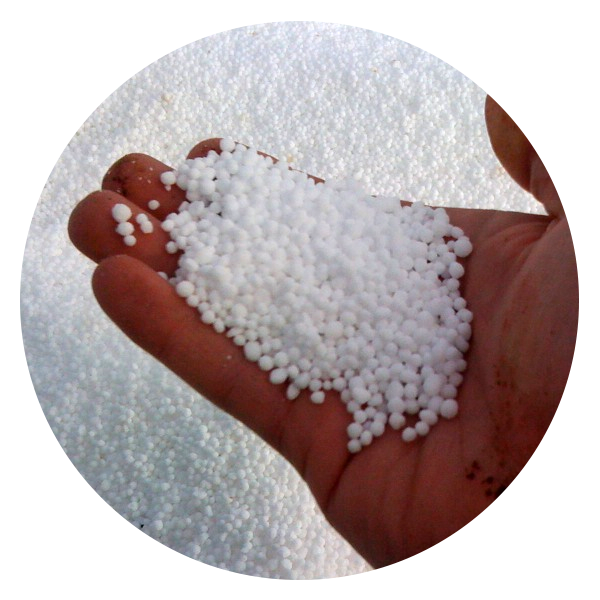Urea 46% N

Urea 46% N Characteristics
Urea is the most concentrated nitrogen fertilizer. It can be applied for all types of crops. Urea is the most concentrated Nitrogen fertilizer. It contains Nitrogen in amide form, which in soil converts first into ammonium and then into nitrate forms. It is readily soluble in water. Using anti-caking agents ensures its free-flowing during storing. Urea is not subject to RID or ADR regulations.
| Chemical formula | CO(NH2)2 | ||||||||||||||||||||||||||||||||||
Parametres |
|
||||||||||||||||||||||||||||||||||
| Packing | Bulk 50 kg PE bags 500 kg PP big-bags with PE insert |
||||||||||||||||||||||||||||||||||
| Transportation | The fertilizer should be transported in the means of transportation which protect the product from the action of water, precipitation, direct sunlight and damage to the packaging. The fertilizer is not subject to RID or ADR regulations. | ||||||||||||||||||||||||||||||||||
| Storage | Urea should be stored in dry, clean and well ventilated roofed compartments with moisture-proof foundation in the piles up to 10 layers of bags. Big-bags weighing up to 500kg may be stored in up to 2 layers. Urea must be protected from moisture. | ||||||||||||||||||||||||||||||||||
| Usage | Urea can be applied on all kinds of soils, except for very acid or just limed soils. It can be applied for all type of crops, both for seedbed and top dressing application. It can be applied in solid or liquid forms. | ||||||||||||||||||||||||||||||||||
| Recommended doses |
|
||||||||||||||||||||||||||||||||||